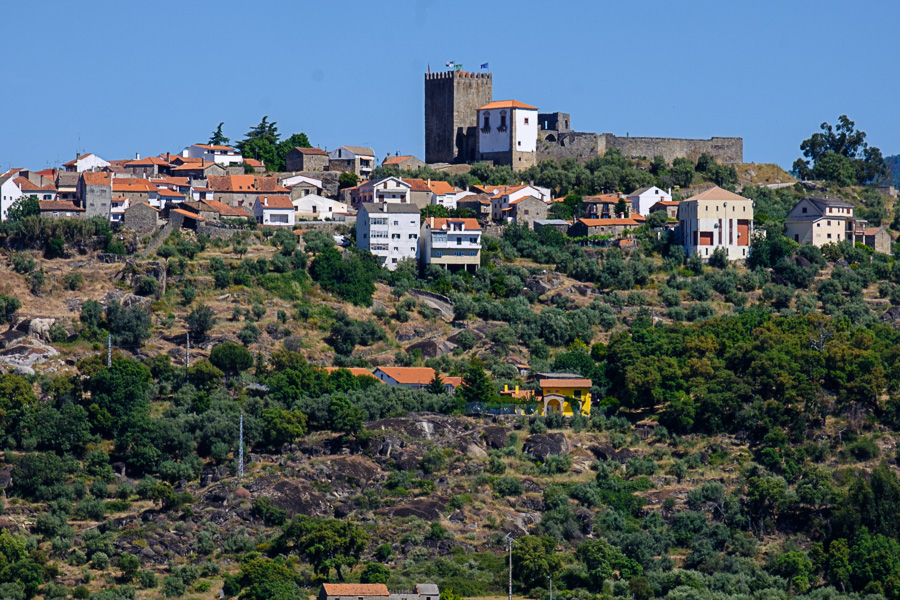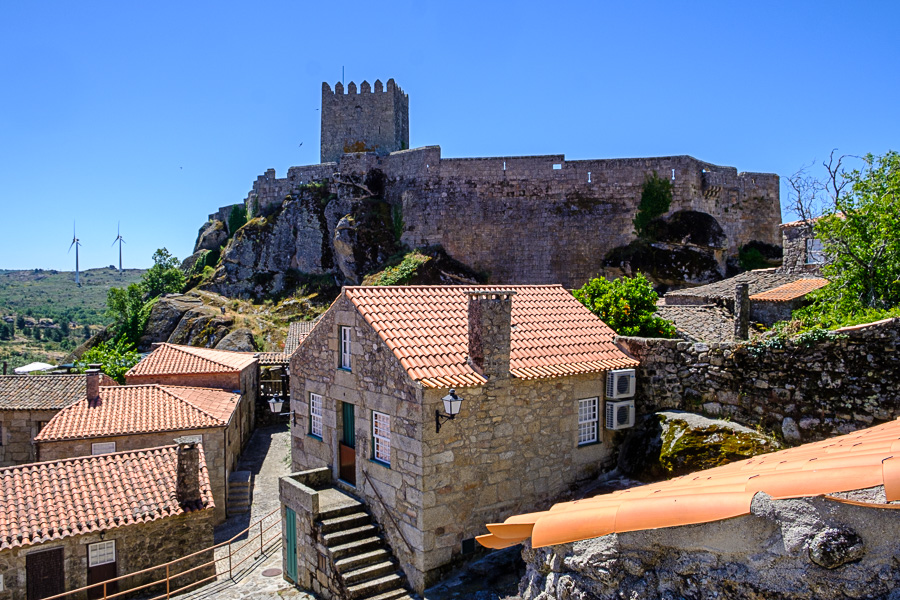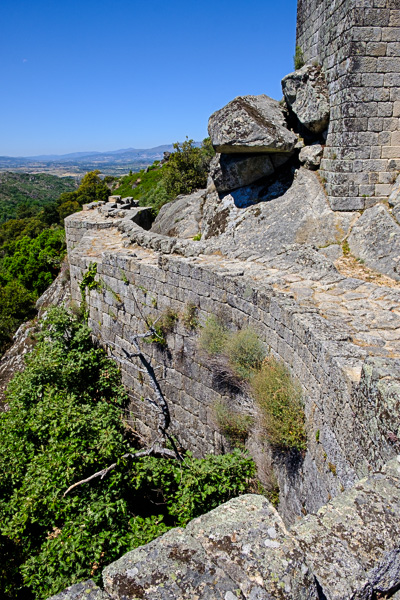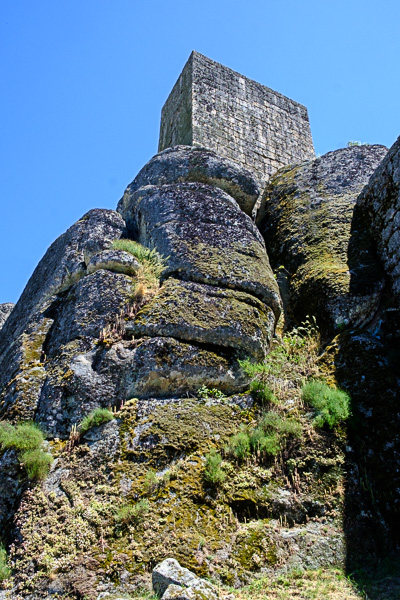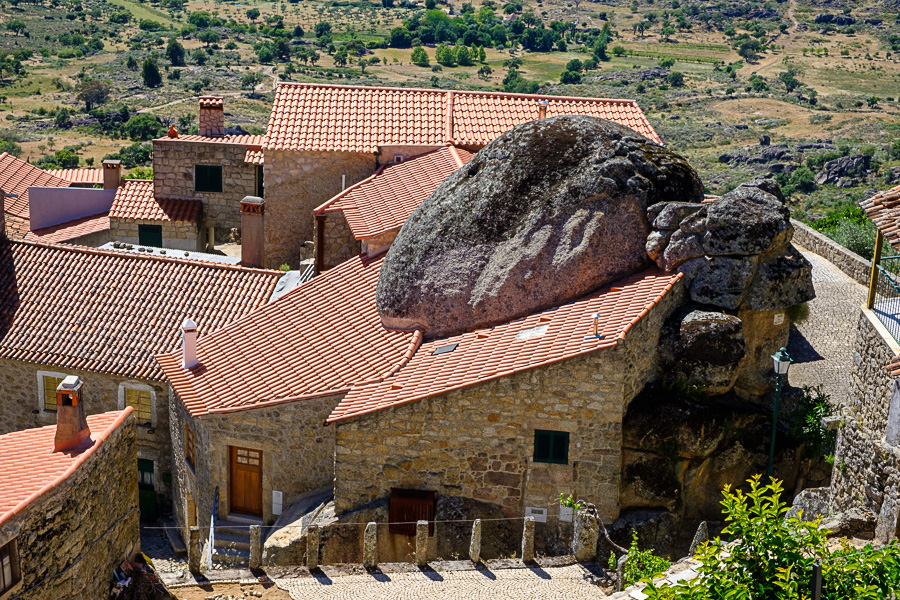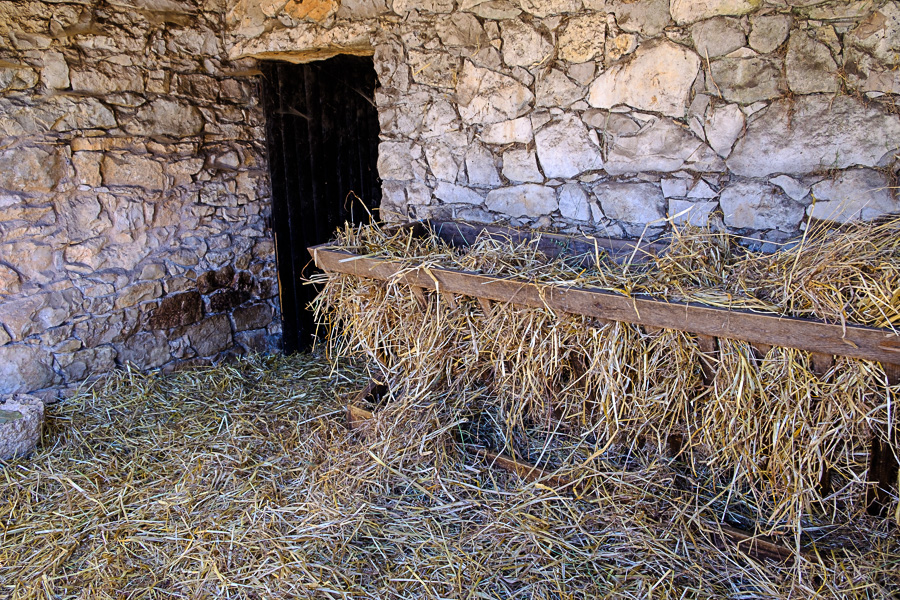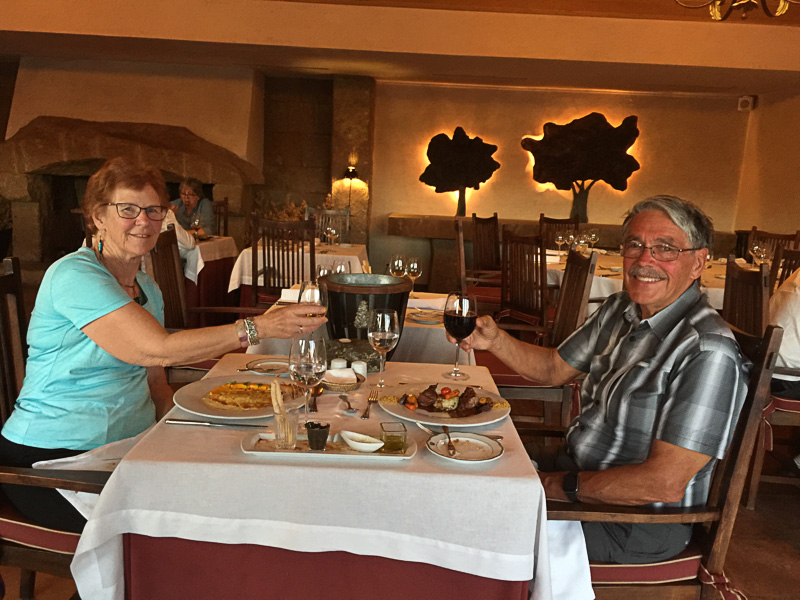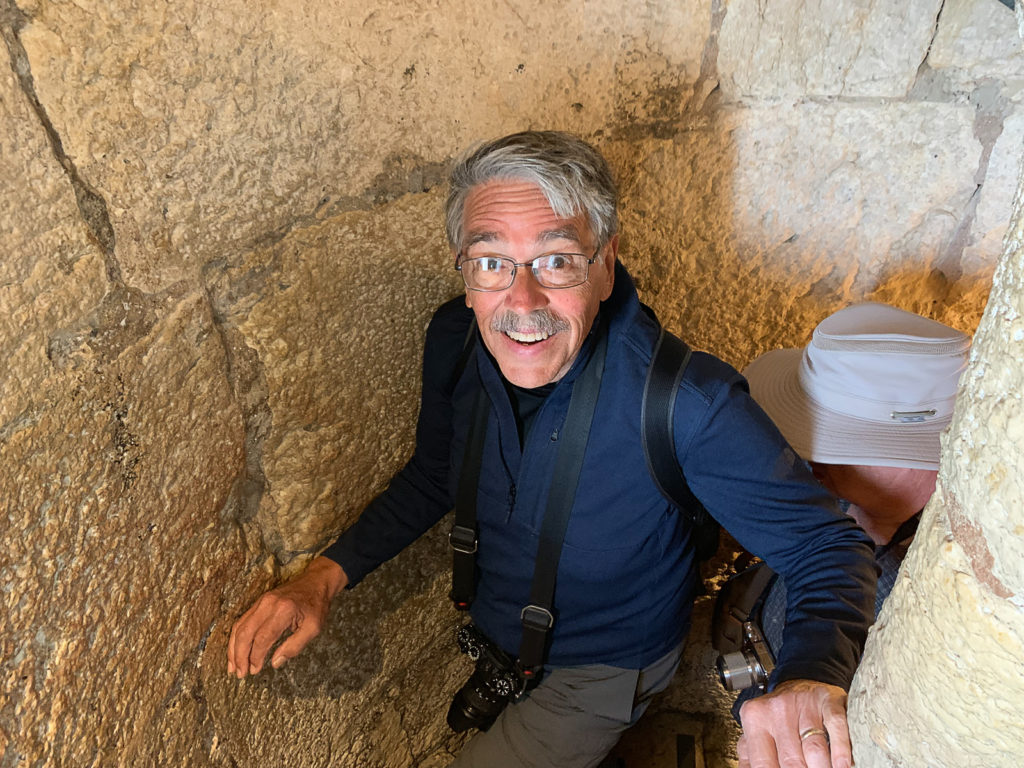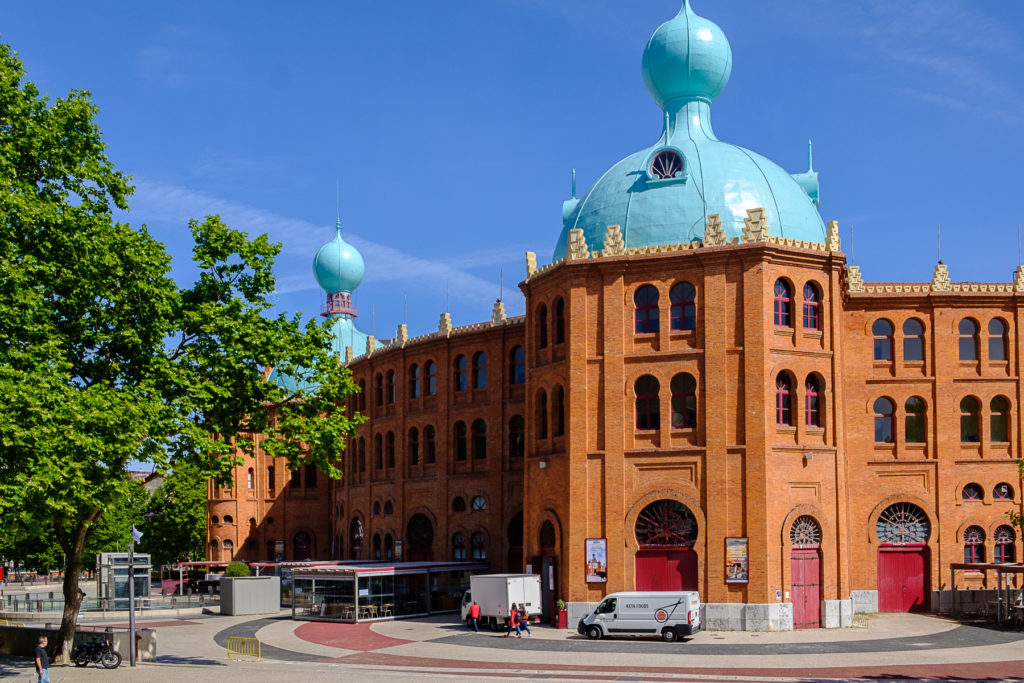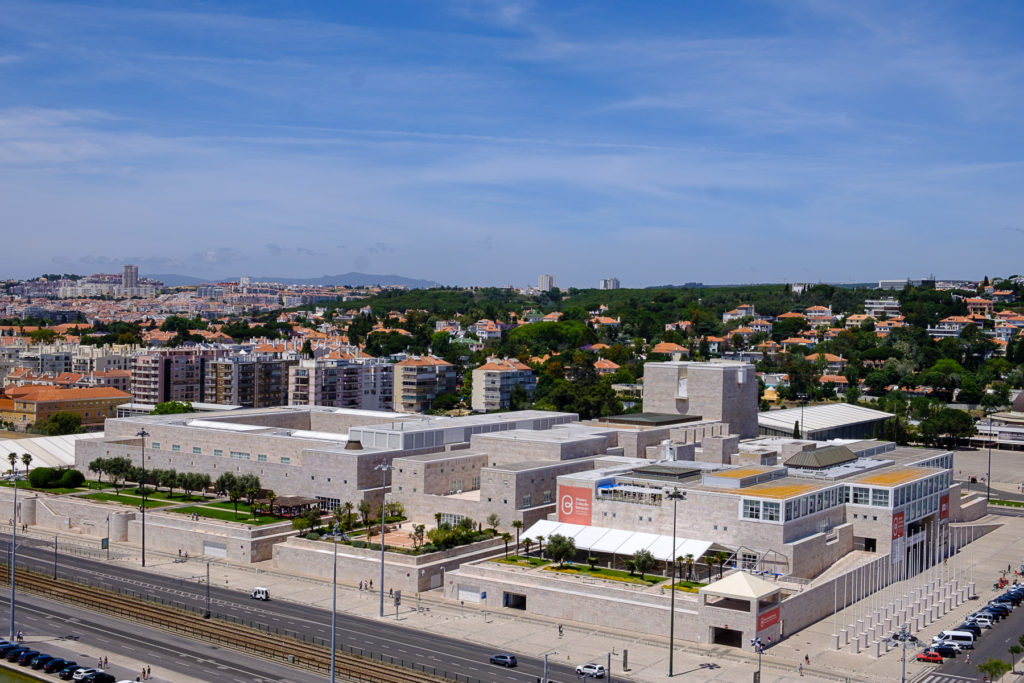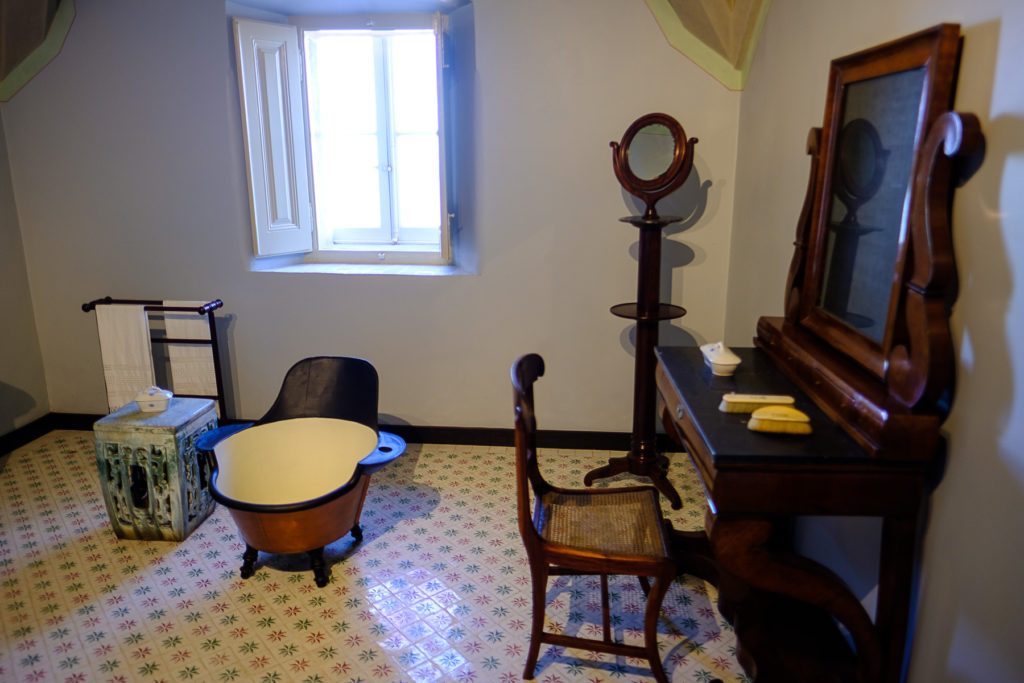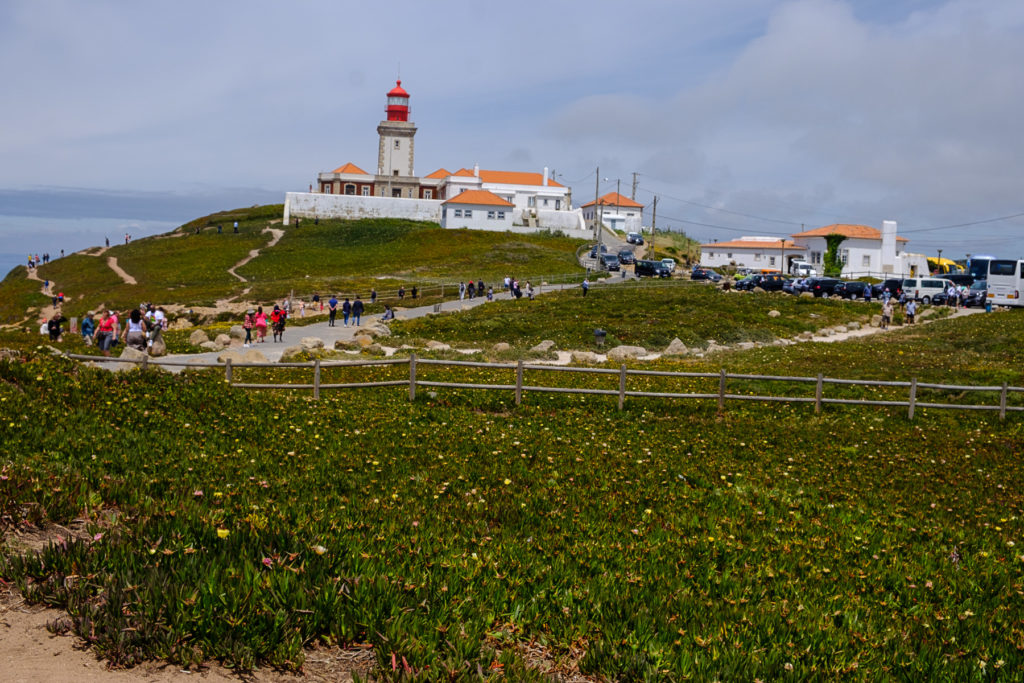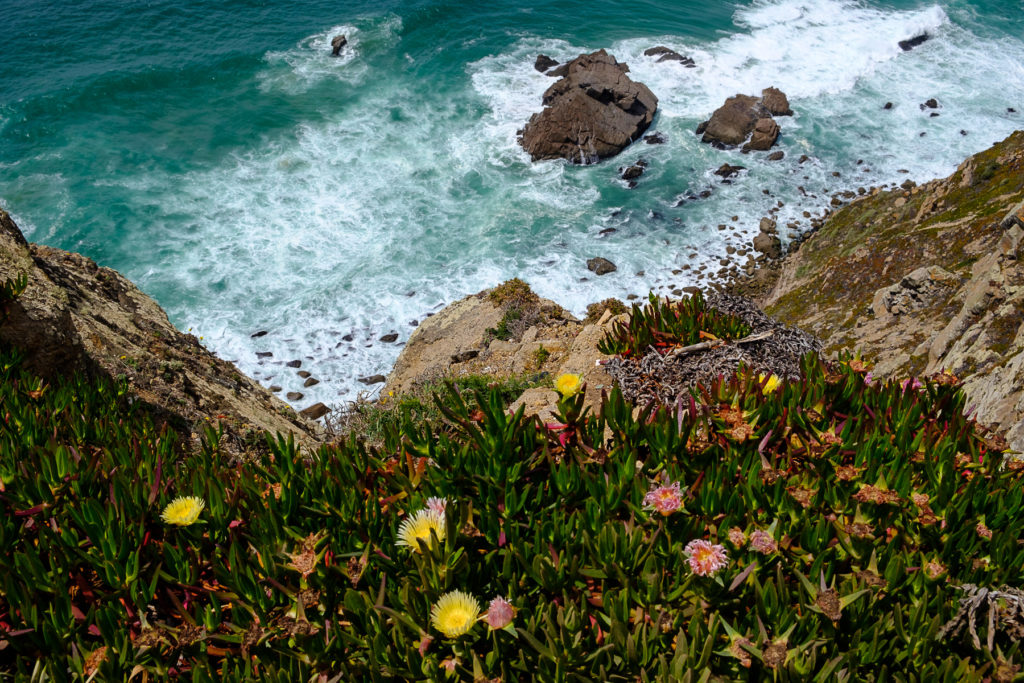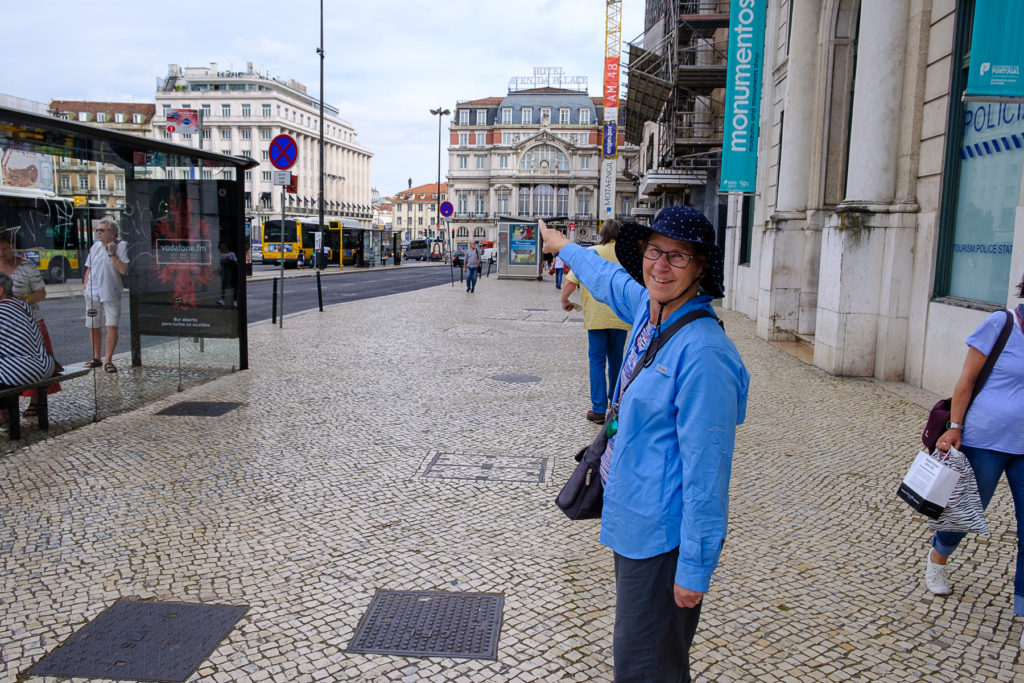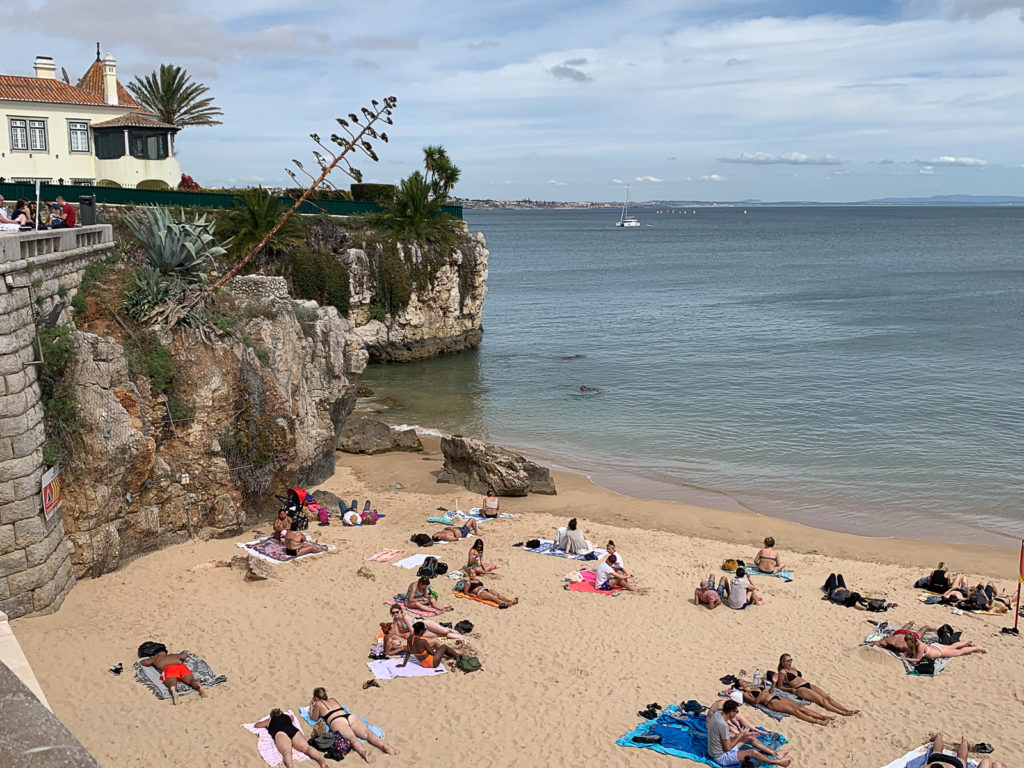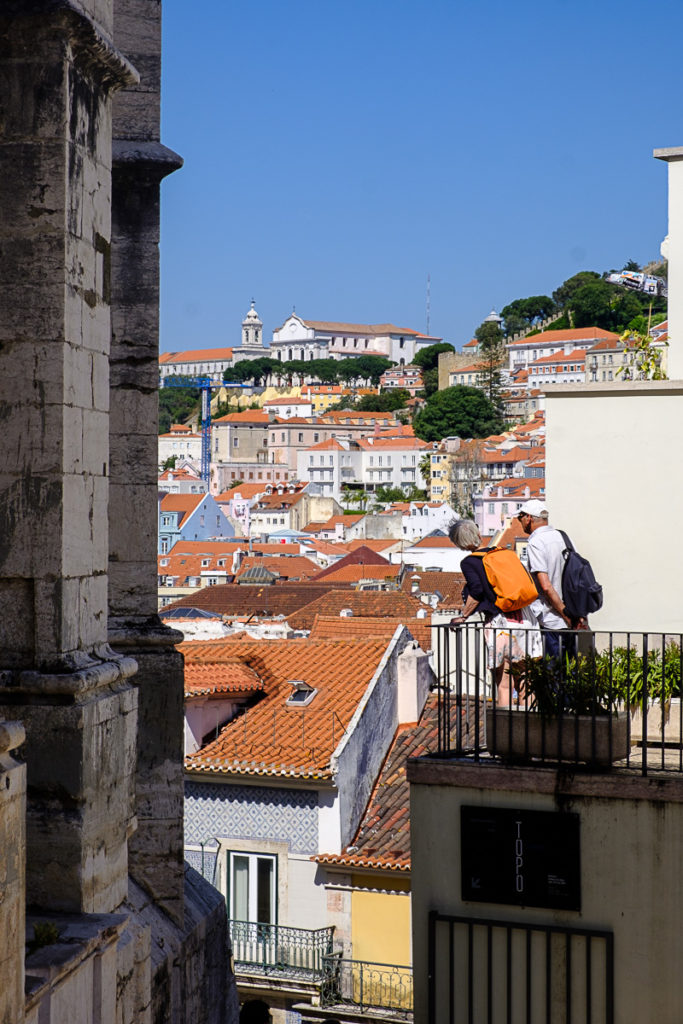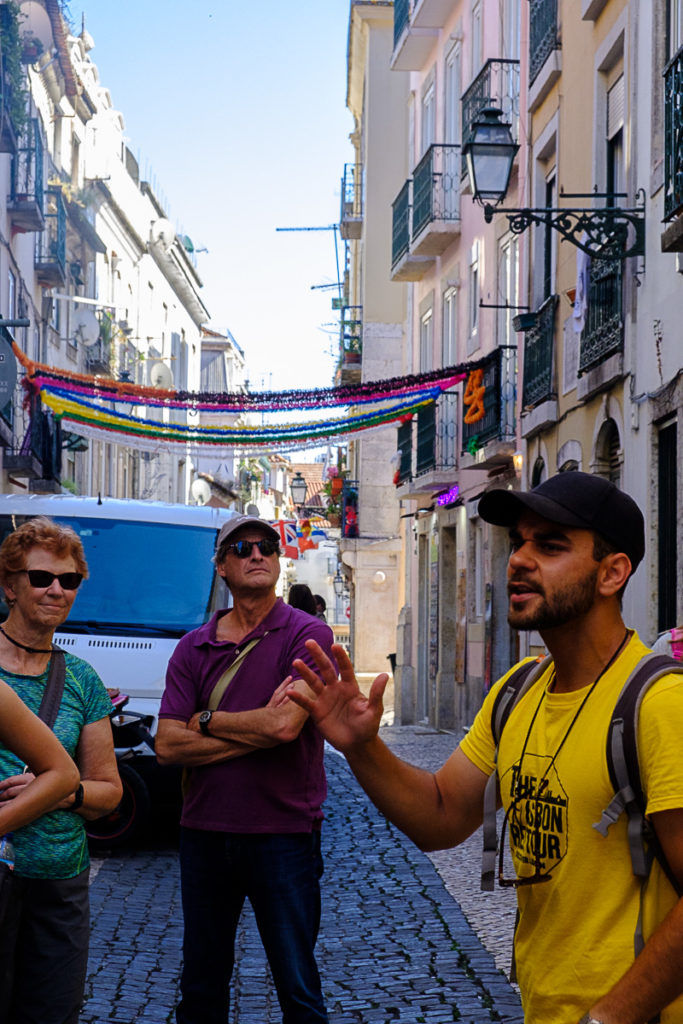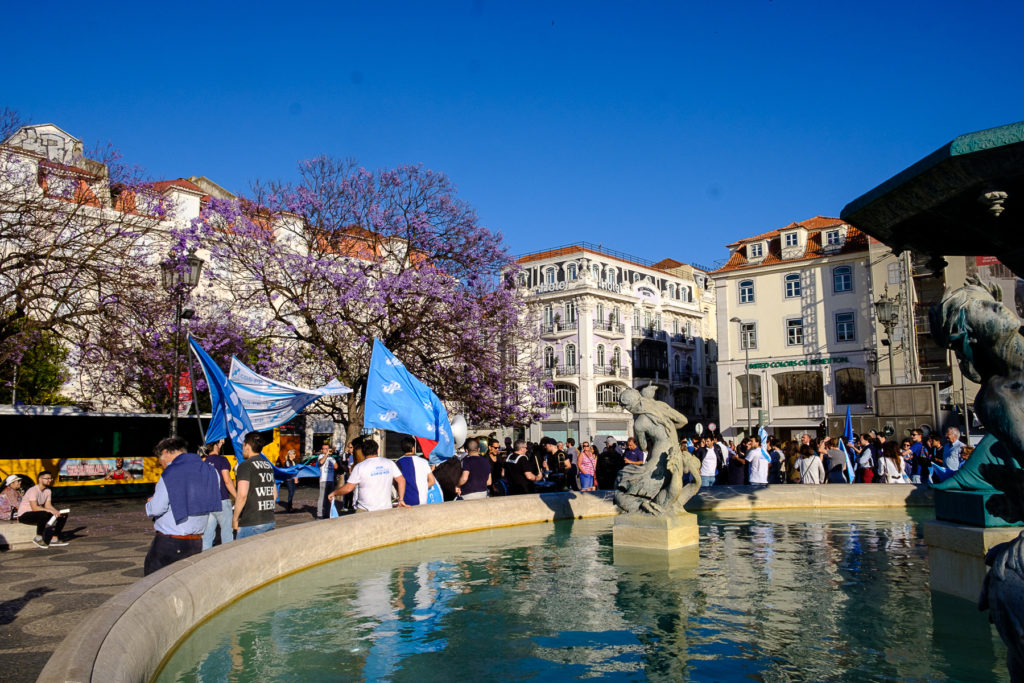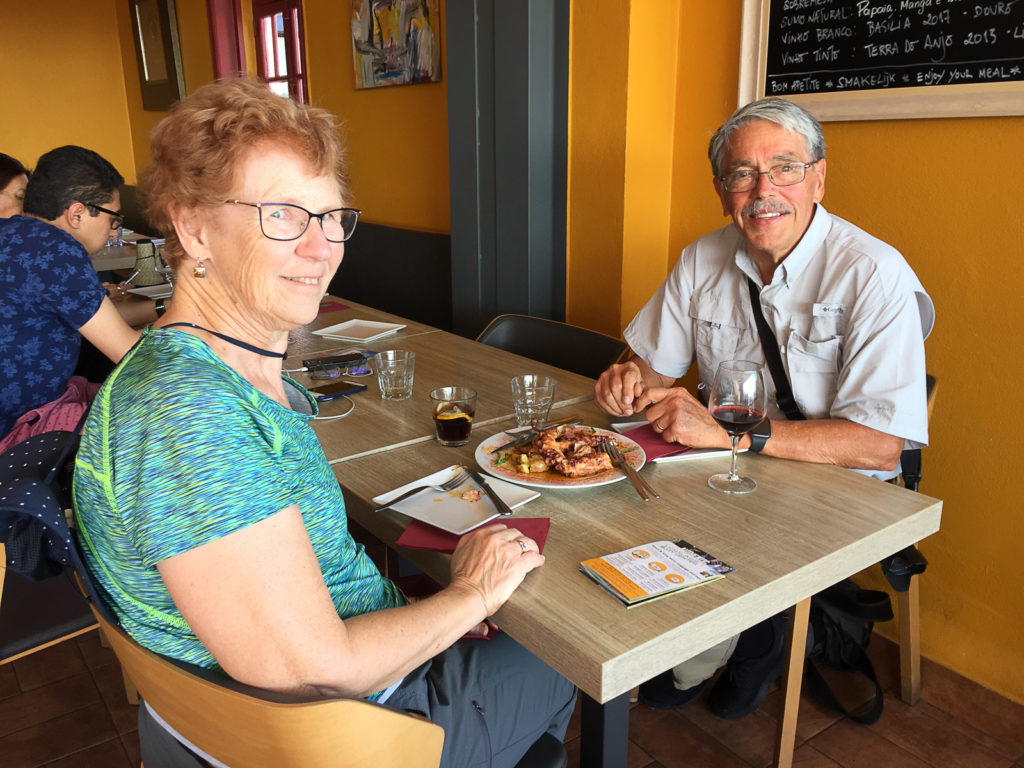A three-fer today: Three castles plus a Roman ruins site for good measure. Then, dinner with the locals – all with about 100 miles of driving.
It’s my guess that virtually every town in this region of Portugal, and I’ll bet elsewhere in Portugal and nearby Spain, has a similar historical background:
The pre-Roman culture, called the Castro culture, existed from the Bronze Age until the Romans came around the first century BC: 2,000 to 3,000 years ago. A castro, or castle as they became known, was a fortification on top of a hill.
The Romans came along and said, “Good idea. We’ll do better.” And they took over and improved the castles. Then came the Visigoths and others who kicked out the Romans (don’t rely on this for your College Board exams, kids). Then came the Moors (Muslims from Africa and elsewhere). The Moors weren’t all bad; they tended to treat all religions and sects fairly, they had the accumulated knowledge of the Greek and Roman eras (lost to Westerners in the Dark Ages), plus knowledge of their own.
But the Portuguese eventually launched the Christian Reconquiste. King Alfonso I took back Monsanto and I assume other castle towns in the region from the Moors in the 12thCentury.
The Reconquiste occurred during the time of the Crusades, launched by the knights from Europe who sought to conquer Muslims everywhere so as to reclaim Jerusalem. The Knights Templar were one such crusading group. Alfonso deeded control of Monsanto and again, presumably, other castle sites, to the Knights Templar in 1165.
Each team that controlled the castle built and rebuilt it in their own style and with their own technologies. When you look at the walls and turrets made of granite, each piece cut to size and laid in place, you wonder how they could do it without our heavy equipment. Nothing like a few thousand low-class workers and a few decades to get the job done. Everyone built and rebuilt except, that is, for the Brits who in the 19thcentury stored gunpowder in the Monsanto keep and blew the whole thing up in a blinding flash.
It was interesting to see how the fortifications were built around the huge boulders of granite that litter the hill side in this region. That keeps construction costs down.
In the case of both Sortelha and Monsanto, the castle was built at the top of the highest hill in the area, the one with steep slopes to deter the enemy. Around and below the fort is a walled city with narrow streets and stone houses and shops. Presumably in olden times the shops were places of craft work; today they sell tee shirts and serve tourist lunches. We had really great cheese sandwiches. Thick, toasted homemade bread with an olive oil and herb mixture slathered on both sides. Gotta try that at home!
But there must have been other workers outside the town walls, specifically those growing the crops and animals needed to feed the town. At a time of invasion, I’d hope, the agrarian types would find refuge in the walled town. I’m not sure if everyone would fit in the castle and especially in the keep – the last line of defense. You can bet there was a pecking order. It’s hard to find a good knight but pig drivers are a dime a dozen.
We had fun visiting these medieval towns and castles. Of the two, Sortelha is the smallest, most compact and requires the least exertion to visit. It’s clearly been fixed up by the government – all the roofs sport brand spanking new tiles, the signage is easy to follow and the street appeal is high.
Monsanto is a larger town and sports a larger castle, but the castle is located a fair distance up the side of the hill. It was a climb of perhaps 30 minutes from village to castle. The village itself requires a climb to traverse; it’s built on the side of a fairly steep hill (as is Sortelha). I suppose a townsperson would have lots of motivation to run up the hill to reach the castle in times of need but the mostly gray-haired tourists we saw today weren’t quite as spirited in their climb.
We topped the day off with a stop in our home base town of Belmonte, a fairly good-sized town with, of course, its own castle. We arrived after closing time (about 5:30 PM) so only viewed the outside. Standard issue Medieval castle from all that we could see.
On the way into Belmonte we stopped at the Roman ruins site. All the signage was in Portuguese and my ability to translate is based on Portuguese’s similarity to Spanish. And since my Spanish vocabulary is muy pequeño to say the least, I probably got this all wrong. But the site was clearly a village of some sort, covering an area of perhaps a half-dozen football fields. All that remain are the foundation outlines of the various buildings stood there in Roman times. The most interesting part was the Roman baths, which the sign said were important for both sanitary reasons and as a place for socialization. I wonder how Roman spa fees stack up against what the YMCA charges?
You may recall that we’ve been eating pretty high off the hog so far on this trip. Tonight, we decided to join the locals. After all, we’ve spent the day driving through one small village after another. They all appeared to be prosperous, neat and clean but the streets were deserted (maybe there’s a futbol thing going on today). We found a small shop on the main drag of Belmonte. There were a half-dozen small tables under an awning outside and a bar and a few tables inside. We joined two groups outside: three youngish guys in denim and a middle-aged lady and a younger woman wearing elevator sandals (three inches I’d judge). They were joined by a white-haired guy; the young woman gave him a kiss. Grandad, mom and daughter? The patrons, including us, were slightly outnumbered by the flies.
We ordered two omelets with crab. Soup was on the menu but, “no soup” our waitress told us in broken English. But the omelet was OK (the “crab” was synthesized in Asia, I’d guess). We topped it off with our favorite go-to caloric source when traveling: Magnum ice cream bars on a stick.
But don’t laugh: dinner, beer-and-coke-zero and dessert came out to one-fifth of what we paid out of our kids’ inheritance funds last night at the fancy pousada restaurant.
Incidentally, the Pousada do Convento de Belmonte, where we’re staying, is built on the ruins of a 16th century convent. I always though convents housed nuns, but all of the rooms are given the name of monks. Our room is the room of Frei Xavier, who appears to have been a scribe of some sort. Pousadas in Portugal are a chain of luxury hotels based on historic sites. The chain was originally run by the Portuguese government but is now run by a private firm.
Tomorrow we roll up our tent, hitch the pony to the VW Pronto and off we go to Porto.






